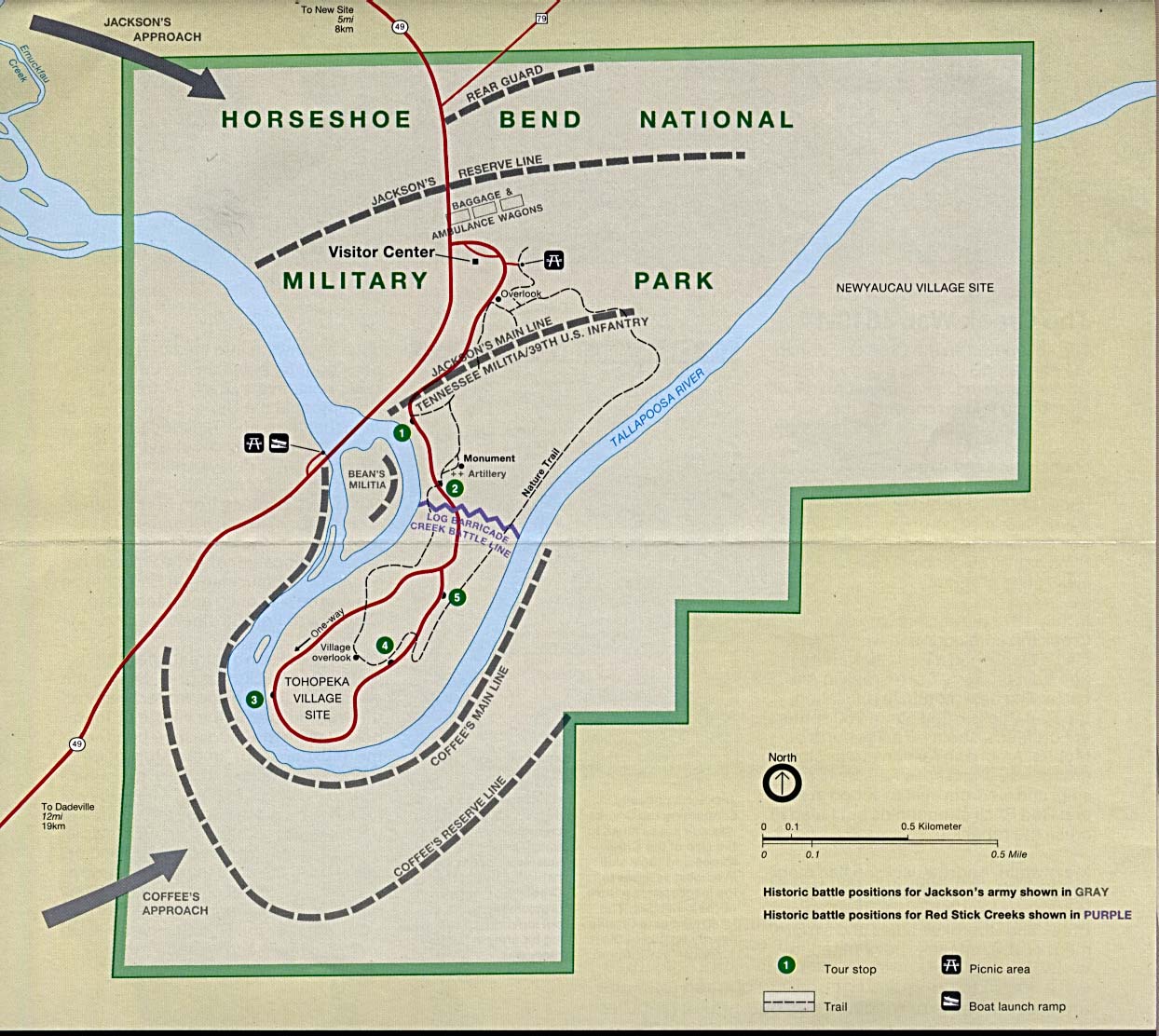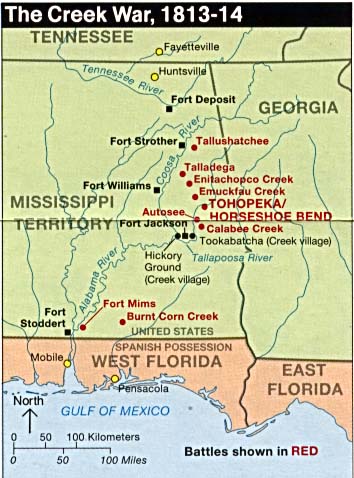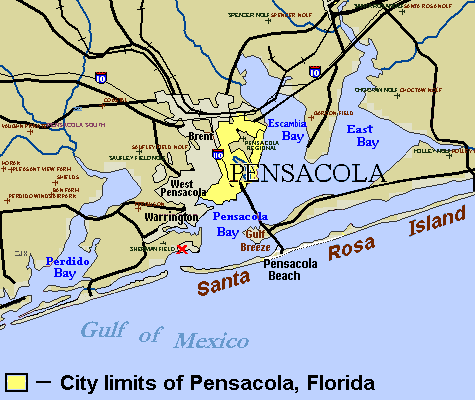|
Battle Of Horseshoe Bend
The Battle of Horseshoe Bend (also known as ''Tohopeka'', ''Cholocco Litabixbee'', or ''The Horseshoe''), was fought during the War of 1812 in the Mississippi Territory, now central Alabama. On March 27, 1814, United States forces and Indian allies under Major General Andrew Jackson defeated the Red Sticks, a part of the Creek Indian tribe who opposed American expansion, effectively ending the Creek War. Background The Creek Indians of Georgia and the eastern part of the Mississippi Territory had become divided into two factions: the Upper Creek (or Red Sticks), a majority who opposed American expansion and sided with the British and the colonial authorities of Spanish Florida during the War of 1812; and the Lower Creek, who were more assimilated into the Anglo culture, had a stronger relationship with the U.S. Indian Agent Benjamin Hawkins, and sought to remain on good terms with the Americans. The Shawnee war leader Tecumseh visited Creek and other Southeast Indian towns i ... [...More Info...] [...Related Items...] OR: [Wikipedia] [Google] [Baidu] |
Creek War
The Creek War (1813–1814), also known as the Red Stick War and the Creek Civil War, was a regional war between opposing Indigenous American Creek factions, European empires and the United States, taking place largely in modern-day Alabama and along the Gulf Coast. The major conflicts of the war took place between state militia units and the "Red Stick" Creeks. The United States government formed an alliance with the Choctaw Nation and Cherokee Nation (the traditional enemies of the Creeks), along with the remaining Creeks to put the rebellion down. According to historian John K. Mahon, the Creek War "was as much a civil war among Creeks as between red and white, and it pointed up the separation of Creeks and Seminoles". The war was also part of the centuries-long American Indian Wars. It is usually considered part of the War of 1812 because it was influenced by Tecumseh's War in the Old Northwest, was concurrent with the American-British portion of the war and involved m ... [...More Info...] [...Related Items...] OR: [Wikipedia] [Google] [Baidu] |
United States
The United States of America (U.S.A. or USA), commonly known as the United States (U.S. or US) or America, is a country primarily located in North America. It consists of 50 states, a federal district, five major unincorporated territories, nine Minor Outlying Islands, and 326 Indian reservations. The United States is also in free association with three Pacific Island sovereign states: the Federated States of Micronesia, the Marshall Islands, and the Republic of Palau. It is the world's third-largest country by both land and total area. It shares land borders with Canada to its north and with Mexico to its south and has maritime borders with the Bahamas, Cuba, Russia, and other nations. With a population of over 333 million, it is the most populous country in the Americas and the third most populous in the world. The national capital of the United States is Washington, D.C. and its most populous city and principal financial center is New York City. Paleo-Americ ... [...More Info...] [...Related Items...] OR: [Wikipedia] [Google] [Baidu] |
Battle Of Burnt Corn
The Battle of Burnt Corn, also known as the Battle of Burnt Corn Creek, was an encounter between United States armed forces and Creek Indians that took place July 27, 1813 in present-day southern Alabama. The battle was part of the Creek War. Background In July 1813, Peter McQueen, a Creek Native American chief, and a large party of Red Stick warriors proceeded to Pensacola, Florida to buy munitions, with $400 and a letter from a British officer at Fort Malden. In McQueen's words, the Spanish governor gave them "a small bag of powder for each ten towns, and five bullets to each man." The governor presented this as a "friendly present, for hunting purposes". But Samuel Moniac, a Creek warrior, testified August 2, 1813 after the events, "High Head told me that, when they went back with their supply, another body of men would go down for another supply of ammunition; and that ten men were to go out of town, and they calculated on 'five horse-loads for every town'." Battle United ... [...More Info...] [...Related Items...] OR: [Wikipedia] [Google] [Baidu] |
Pensacola, Florida
Pensacola () is the westernmost city in the Florida Panhandle, and the county seat and only incorporated city of Escambia County, Florida, United States. As of the 2020 United States census, the population was 54,312. Pensacola is the principal city of the Pensacola Metropolitan Area, which had an estimated 502,629 residents . Pensacola is the site of the first Spanish settlement within the borders of the continental United States in 1559, predating the establishment of St. Augustine by 6 years, although the settlement was abandoned due to a hurricane and not re-established until 1698. Pensacola is a seaport on Pensacola Bay, which is protected by the barrier island of Santa Rosa and connects to the Gulf of Mexico. A large United States Naval Air Station, the first in the United States, is located southwest of Pensacola near Warrington; it is the base of the Blue Angels flight demonstration team and the National Naval Aviation Museum. The main campus of the University of West F ... [...More Info...] [...Related Items...] OR: [Wikipedia] [Google] [Baidu] |
Southeastern United States
The Southeastern United States, also referred to as the American Southeast or simply the Southeast, is a geographical region of the United States. It is located broadly on the eastern portion of the southern United States and the southern portion of the eastern United States. It comprises at least a core of states on the lower East Coast of the United States and eastern Gulf Coast. Expansively, it reaches as far north as West Virginia and Maryland (bordered to north by the Ohio River and Mason–Dixon line), and stretching as far west as Arkansas and Louisiana. There is no official U.S. government definition of the region, though various agencies and departments use different definitions. Geography The U.S. Geological Survey considers the Southeast region to be the states of Alabama, Florida, Georgia, Arkansas, Kentucky, Louisiana, Mississippi, North Carolina, South Carolina, and Tennessee, plus Puerto Rico and the United States Virgin Islands. There is no official Census Bu ... [...More Info...] [...Related Items...] OR: [Wikipedia] [Google] [Baidu] |
Tecumseh
Tecumseh ( ; October 5, 1813) was a Shawnee chief and warrior who promoted resistance to the expansion of the United States onto Native American lands. A persuasive orator, Tecumseh traveled widely, forming a Native American confederacy and promoting intertribal unity. Even though his efforts to unite Native Americans ended with his death in the War of 1812, he became an iconic folk hero in American, Indigenous, and Canadian popular history. Tecumseh was born in what is now Ohio, at a time when the far-flung Shawnees were reuniting in their Ohio Country homeland. During his childhood, the Shawnees lost territory to the expanding American colonies in a series of border conflicts. Tecumseh's father was killed in battle against American colonists in 1774. Tecumseh was thereafter mentored by his older brother Cheeseekau, a noted war chief who died fighting Americans in 1792. As a young war leader, Tecumseh joined Shawnee Chief Blue Jacket's armed struggle against further Amer ... [...More Info...] [...Related Items...] OR: [Wikipedia] [Google] [Baidu] |
Shawnee
The Shawnee are an Algonquian-speaking indigenous people of the Northeastern Woodlands. In the 17th century they lived in Pennsylvania, and in the 18th century they were in Pennsylvania, Ohio, Indiana and Illinois, with some bands in Kentucky and Alabama. By the 19th century, they were forcibly removed to Missouri, Kansas, Texas, and ultimately Indian Territory, which became Oklahoma under the 1830 Indian Removal Act. Today, Shawnee people are enrolled in three federally recognized tribes, all headquartered in Oklahoma: the Absentee-Shawnee Tribe of Indians, Eastern Shawnee Tribe of Oklahoma, and Shawnee Tribe. Etymology Shawnee has also been written as Shaawanwaki, Ša·wano·ki, Shaawanowi lenaweeki, and Shawano. Algonquian languages have words similar to the archaic ''shawano'' (now: ''shaawanwa'') meaning "south". However, the stem ''šawa-'' does not mean "south" in Shawnee, but "moderate, warm (of weather)": See Charles F. Voegelin, "šawa (plus -ni, -te) MODERATE, WARM ... [...More Info...] [...Related Items...] OR: [Wikipedia] [Google] [Baidu] |
Benjamin Hawkins
Benjamin Hawkins (August 15, 1754June 6, 1816) was an American planter, statesman and a U.S. Indian agent He was a delegate to the Continental Congress and a United States Senator from North Carolina, having grown up among the planter elite. Appointed by George Washington in 1796 as one of three commissioners to the Creeks, in 1801 President Jefferson named him "principal agent for Indian affairs south of the Ohio iver, and was principal Indian agent to the Creek Indians. Hawkins established the Creek Agency and his plantation near present-day Roberta, Georgia, in what became Crawford County. He learned the Muscogee language, and had a Creek woman, Lavinia Downs, as common-law wife, who, in the Creek's matrilineal society, provided an entry into that world. He had seven children with her, although he resisted Creek pressure to marry her until near the end of his life. He wrote extensively about the Creek and other Southeast tribes: the Choctaw, Cherokee and Chickasaw. He e ... [...More Info...] [...Related Items...] OR: [Wikipedia] [Google] [Baidu] |
Indian Agent
In United States history, an Indian agent was an individual authorized to interact with American Indian tribes on behalf of the government. Background The federal regulation of Indian affairs in the United States first included development of the position of Indian agent in 1793 under the Second Trade and Intercourse Act (or the Nonintercourse Act). This required land sales by or from Indians to be federally licensed and permitted. The legislation also authorized the president of the United States to "appoint such persons, from time to time, as temporary agents to reside among the Indians," and guide them into acculturation of American society by changing their agricultural practices and domestic activities. Eventually, the U.S. government ceased using the word "temporary" in the Indian agent's job title. History, 1800–1840s From the close of the 18th century to nearly 1869, Congress maintained the position that it was legally responsible for the protection of Indians from no ... [...More Info...] [...Related Items...] OR: [Wikipedia] [Google] [Baidu] |
Anglo-Americans
Anglo-Americans are people who are English-speaking inhabitants of Anglo-America. It typically refers to the nations and ethnic groups in the Americas that speak English as a native language, making up the majority of people in the world who speak English as a first language. Usage The term is ambiguous and used in several different ways. While it is primarily used to refer to people of English ancestry, it (along with terms like ''Anglo'', ''Anglic'', ''Anglophone'', and ''Anglophonic'') is also used to denote all people of British or Northwestern European ancestry, such as Northwestern European Americans. It can include all people of Northwestern European ethnic origin who speak English as a mother tongue and their descendants in the New World.Mish, Frederic C., Editor in Chief ''Webster's Tenth New Collegiate Dictionary'' Springfield, Massachusetts, U.S.A.:1994--Merriam-Webster See original definition (definition #1) of ''Anglo'' in English: It is defined as a synonym for '' ... [...More Info...] [...Related Items...] OR: [Wikipedia] [Google] [Baidu] |
Spanish Florida
Spanish Florida ( es, La Florida) was the first major European land claim and attempted settlement in North America during the European Age of Discovery. ''La Florida'' formed part of the Captaincy General of Cuba, the Viceroyalty of New Spain, and the Spanish Empire during Spanish colonization of the Americas. While its boundaries were never clearly or formally defined, the territory was initially much larger than the present-day state of Florida, extending over much of what is now the southeastern United States, including all of present-day Florida plus portions of Georgia, Alabama, Mississippi, North Carolina, South Carolina, and Louisiana. Spain's claim to this vast area was based on several wide-ranging expeditions mounted during the 16th century. A number of missions, settlements, and small forts existed in the 16th and to a lesser extent in the 17th century; they were eventually abandoned due to pressure from the expanding English and French colonial settlements, the collap ... [...More Info...] [...Related Items...] OR: [Wikipedia] [Google] [Baidu] |





